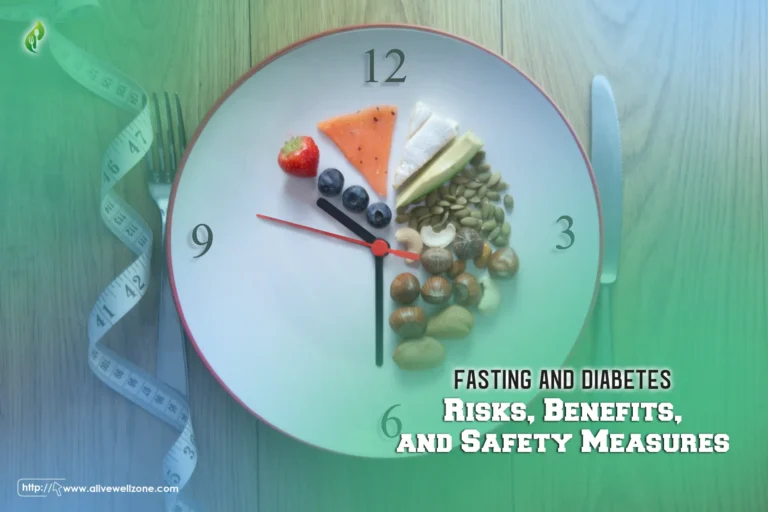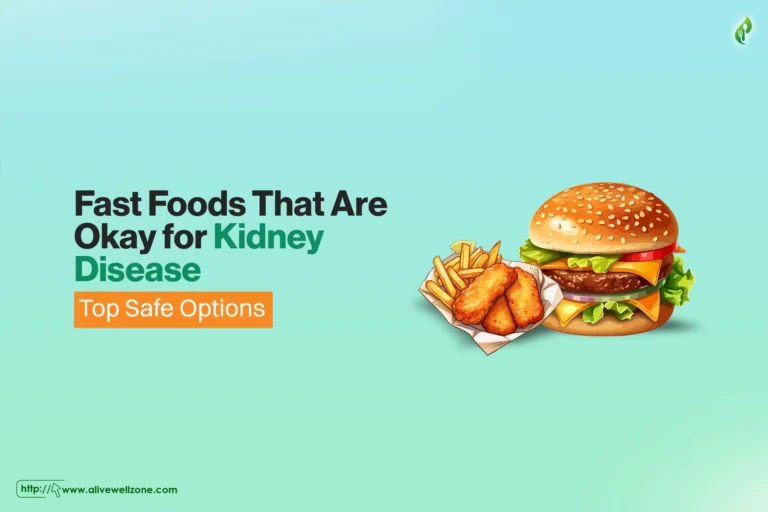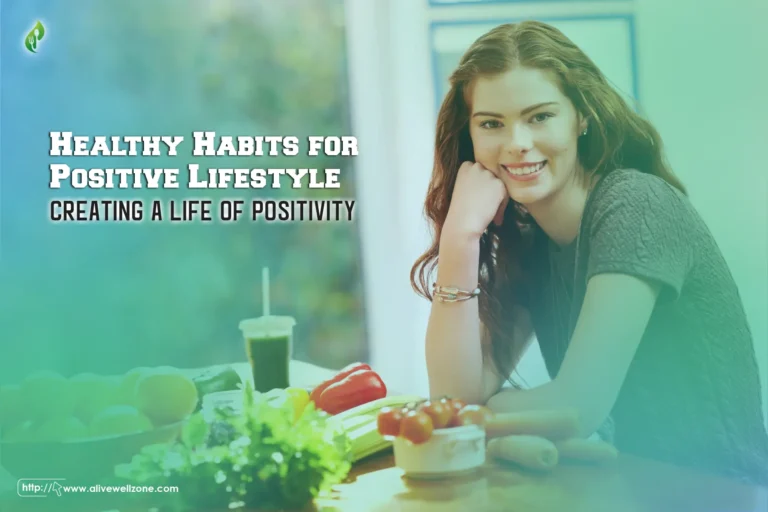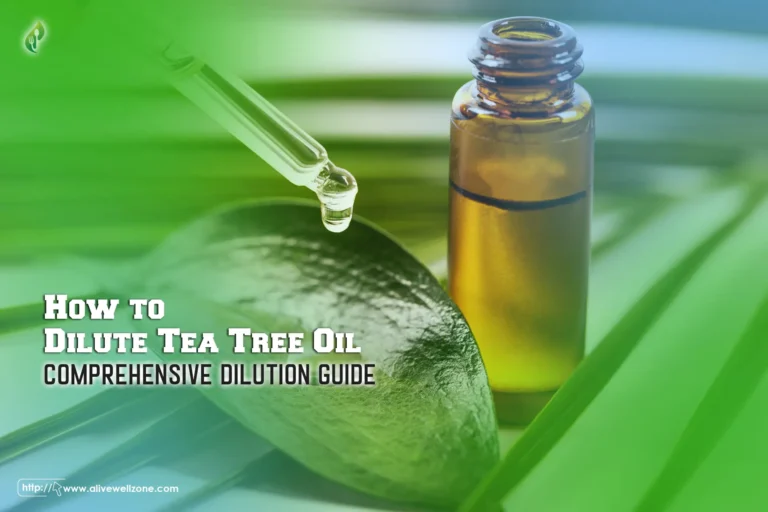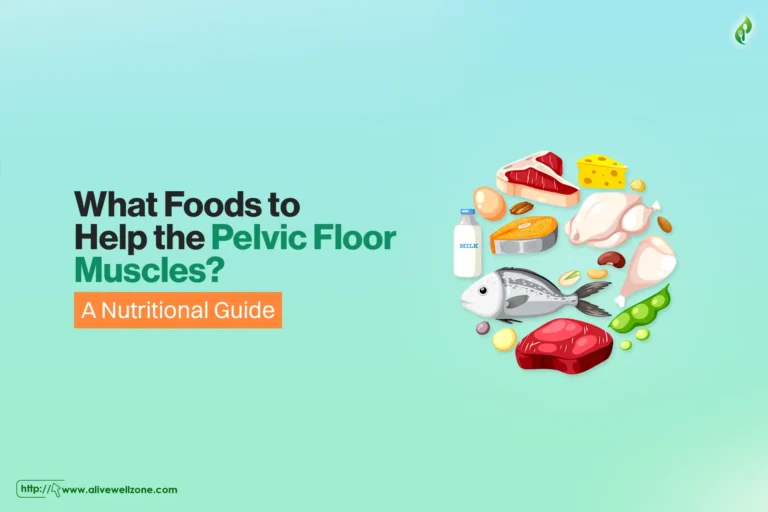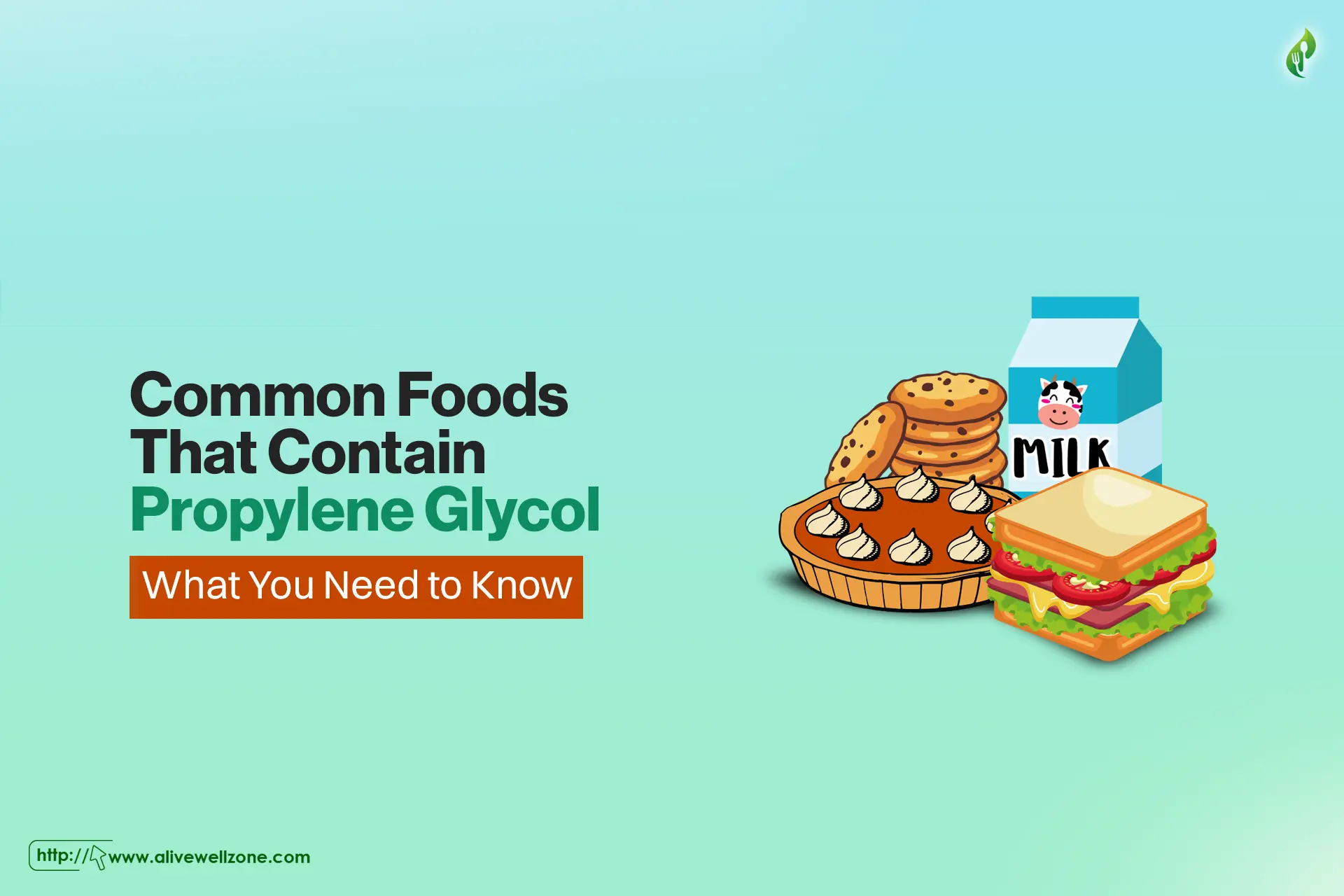
Last Updated on December 23, 2024 by Helena Akter
You’ve probably heard of propylene glycol. It’s a common ingredient in many processed foods. Well, there are concerns about its health! However, first, you should know about the foods that contain propylene glycol.
Propylene glycol is found in seasoning blends, drink mixes, baked goods, dairy products, and snacks. It helps keep food moist, prevents clumping, and makes food last longer. While the FDA says it’s safe, some people may have health problems, especially those with allergies.
Now that you know about the foods, let’s talk about why propylene glycol is used in food. We’ll also discuss if it’s safe and potential health risks. Read on to learn more!
Key Takeaways
- Propylene Glycol (PG): It’s a synthetic liquid used in foods for moisture retention, dissolving substances, and improving texture. It’s generally recognized as safe by the FDA and WHO.
- Foods that Contain Propylene Glycol: PG is common in processed foods like seasoning blends, baked goods, salad dressings, drinks, and dairy products. It also appears in cosmetics and medications.
- Potential Health Concerns: In rare cases, excessive PG consumption or exposure can cause kidney, liver, neurological, or heart issues. It’s especially risky in vulnerable groups like infants, pregnant women, and those with existing health conditions.
- Ways to Avoid PG: To reduce intake, check ingredient labels for propylene glycol or its alternative names, and focus on fresh, unprocessed foods. Most people can safely consume it in moderation, but it’s best to limit packaged foods if concerned.
What Is Propylene Glycol?
Propylene glycol is a synthetic liquid commonly used in manufacturing polyester compounds, says the National Library of Medicine. It’s an odorless, colorless liquid, and is a bit thicker than water. Plus, it has a faintly syrupy texture and almost no flavor.
One of its key qualities is its ability to dissolve substances more effectively than water and preserve moisture. This makes it a useful additive in many processed foods and beverages. However, it raises questions such as whether artificial food additives are harmful for health.
While it’s often confused with ethylene glycol, they’re different chemicals. Both have been used in antifreeze because of their low freezing points. However, propylene glycol is generally recognized as safe for use in food.
What Common Foods Contain Propylene Glycol?
You’ll find propylene glycol (PG) in a wide range of everyday items, both packaged and fresh. So, Here’s a list of foods that contain propylene glycol —
- Seasoning blends
- Powdered drink mixes
- Dried soup mixes
- Flavored teas
- Baking mixes (for cakes, biscuits, muffins, pancakes, etc.)
- Alcoholic drinks
- Soft drinks and sports beverages
- Packaged snacks and fast foods
- Food coloring and flavor extracts
- Cake frostings
- Flavored popcorn
- Mass-produced baked goods (cakes, muffins, desserts)
- Flavored ice creams
- Shredded dried coconut
- Marshmallows
- Salad dressings and marinades
- Frozen snacks and dinners
- Sour cream and potato salad
- Condiments and sauces
- Pre-prepared meals
- Some types of bread
- Dairy products like flavored milk, pudding, and yogurt
- Canned beans
- Chocolates and candy
- Bacon
Why Would a Food Contain Propylene Glycol?
Here are some of the reasons why foods and drinks that contain propylene glycol exist —
- First, it works as an emulsifier, which means it helps things like oil and water mix smoothly. Without it, your favorite salad dressing might separate into layers.
- Second, it’s great at keeping food moist. You’ll often find it in foods like marshmallows, which stop them from drying out. Plus, it keeps them soft for longer.
- Another reason it’s added is to prevent clumping. If you’ve ever wondered why your grated cheese stays separate and doesn’t turn into a sticky lump, propylene glycol might be the answer.
- It also acts as a preservative, helping extend the shelf life of many packaged foods. This means products stay fresh longer without spoiling.
- In addition, propylene glycol is used as a carrier for other ingredients. It helps dissolve and evenly distribute colors, flavors, and other additives in things like snow cone syrups or baking flavors.
- Lastly, it can improve the texture of food. It gives certain foods a thicker, creamier feel, making them more enjoyable to eat.
So, while you may not notice it, propylene glycol is quietly working behind the scenes to keep your food fresh and tasty.
How Safe Is Propylene Glycol?
When it comes to food additives, safety is always a top concern. Both the FDA and the World Health Organization (WHO) have set strict guidelines on its usage to protect consumers.
Here’s a breakdown of what you should know —
- The FDA has labeled propylene glycol as “Generally Recognized as Safe” (GRAS), meaning they’ve reviewed the science and consider it safe in food.
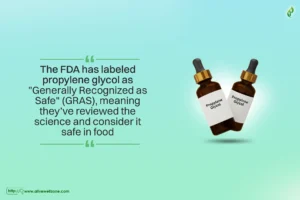
- To ensure your safety, the FDA limits how much propylene glycol can be added to different foods and beverages.
- The World Health Organization (WHO) also steps in, setting a recommended daily intake level. For example, you can safely consume up to 25 mg of propylene glycol for every kilogram of your body weight.
- It’s good to know that most foods with propylene glycol have only a little bit. Hence, your body can process and break it down quickly.
So, if you’re wondering what foods contain propylene glycol, it’s typically found in processed items. However, they’re safe to enjoy in moderation.
Potential Health Risks of Propylene Glycol in Food
Yes, the WHO set a limit for how much you can take. But in the U.S., people usually get about 34 milligrams of PG for every 2.2 pounds of body weight. Well, it’s roughly 75 mg/kg of body weight, which can exceed recommended levels. This excessive intake can lead to toxicity.
Some people say you should eat less PG. They think it might cause the following health issues —
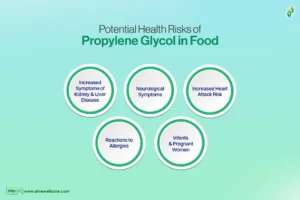
1. Increased Symptoms of Kidney and Liver Disease
Propylene glycol is usually broken down and removed from your body quickly. However, if you suffer from liver or kidney problems, this process may be slower. It can cause too much propylene glycol to build up lactic acid in your blood.
Hence, you’ll feel sick, and can also cause other problems, like acidosis. Besides, there is no set limit for how much propylene glycol can be used in medicines. So, you could get a very large amount in some cases.
In fact, one woman with kidney damage was given too much lorazepam. She got 40 times the usual amount over 72 hours! Ultimately, it caused her serious problems, like acidosis.
People who are critically sick often have problems with their livers or kidneys. They may also be at risk if they take a lot of medicine for a long time.
One study found that 19% of very sick people who were given lorazepam had signs of propylene glycol poisoning.
If you have kidney or liver problems, your doctor may give you medicines without propylene glycol. Moreover, there is no proof that eating foods with propylene glycol is a problem.
2. Neurological Symptoms
There have been reports of propylene glycol affecting the brain in some cases. For example, a woman with epilepsy began having repeated seizures and fell into a confused, dazed state.
This was traced back to propylene glycol poisoning, though the exact source wasn’t identified. Aside from that, babies who were given medicine with propylene glycol have also had seizures.
In a study, 16 patients were given a large amount of propylene glycol for 3 days. One of them had serious brain problems, but the exact symptoms are not known. A lot of propylene glycol was applied in two studies.
However, another study showed that even small amounts can have effects. Scientists found that 2 to 15 milliliters of propylene glycol made people feel dizzy, sick, and strange. And these feelings went away after 6 hours.
These symptoms might sound bad, but many things can make people feel this way when they are taken in too much. Unlike unhealthy foods, propylene glycol in food has not been linked to any brain or nerve problems.
3. Increased Heart Attack Risk
When you inject a lot of propylene glycol too fast, your blood pressure can go down and your heart rhythm might be off.
Studies on animals also show that very large amounts of PG can slow down your heart rate quickly and result in low-blood pressure. In the worst case, it can even stop your heart.

In one case, an 8-month-old baby had heart problems and brain damage after using a cream called silver sulfadiazine. Now, that cream had propylene glycol that was applied to treat burns on 78% of his body.
The child in this case received a very high dose of propylene glycol, 4.1 grams for every pound (9 g/kg).
In another case, a 15 month old child was given vitamin C that was mixed with propylene glycol. The child became sick and had unsteady heart rhythms. These symptoms stopped when the child stopped taking the vitamin solution..
Yes, these reports are worrying! However, you should remember that both children were given very large amounts of medicine.
4. Reactions to Allergies
In 2018, the American Contact Dermatitis Society named propylene glycol (PG) as the Allergen of the Year. Roughly between 0.8 to 3.5% of people suffer from propylene glycol allergy on their skin.
Now, people with PG often get a rash on their face or a rash all over their body. Some people have reported systemic dermatitis after consuming foods high in propylene glycol. Plus, they took intravenous drugs and medications that contained PG.
One study gave 38 people with sensitive skin PG by mouth. And 15 of them got a rash within 3 to 16 hours. In addition, people with sensitive skin or skin problems are more likely to be allergic to propylene glycol.
So, if you have allergic dermatitis, you can try alternatives like azelaic acid and retinol.
5. Infants and Pregnant Women
Women who are pregnant, with kids, and babies below 4 years old have less of an enzyme called alcohol dehydrogenase. This enzyme helps deconstruct propylene glycol in the body.
These groups might face health risks if they get too much propylene glycol from medicines. It’s because their bodies can’t process it as well.
Now, babies are especially vulnerable. It takes them much longer (3 times) to get rid of propylene glycol compared to adults. Their brains and nerves may also be more sensitive to its effects.
Plus, some reports show that giving newborn babies big shots of vitamins with propylene glycol in them caused seizures.
But other research found that small babies could handle up to 34 mg of PG per kg of body weight in a day without problems.
These groups might be more likely to get sick from very high doses of medicine. However, no studies show that the small amounts of food cause any harm.
How to Avoid Propylene Glycol in Your Food
Many packaged foods contain propylene glycol (PG). If you want to eat less of it, you can take some simple actions. Besides, most people’s bodies get rid of PG within two days.
While it’s usually seen as safe, some choose to cut back on how much they take. So, here’s how to avoid —
- Look at Ingredients: When shopping, read what’s in the food. PG might be noted as propylene glycol mono and E1520 or diester.
- Eat Less Packaged Food: Many prepared and boxed items have PG. To avoid it, try making your own sauces, dressing, or baked treats at home.
- Choose Natural Foods: Eating more foods that don’t contain propylene glycol like fresh fruits, veggies, and grains. That way, you’ll get fewer additives like PG. These foods don’t have extra chemicals added to them.
How to Find Out If a Product Contains Propylene Glycol?
Finding out if something has propylene glycol (PG) is easy. The best way is to look at the list of ingredients. PG is usually written there.
However, it can have different names, like —
- Propylene glycol
- 1,2-Propanediol
- Propane-1,2-diol
- 1,2-Dihydroxypropane
- Isopropylene glycol
You can often see PG in things like cosmetics, shampoos, skincare items, and conditioners.
But there’s one important thing to remember! PG can be hidden in flavorings. When it’s used this way, you might not see it listed on its own.
So, be careful with products that list “natural flavors,” “artificial flavors,” or just “flavorings.” PG might be in these without being named directly.
Is Propylene Glycol Dangerous?
Although PG is generally considered safe, you should be aware of its potential effects on your health.
- Approved for Use: The FDA has approved propylene glycol as a “generally recognized as safe” (GRAS) in the United States. It’s also used in Europe, but only in certain forms like solvents for some ingredients.
- Regulatory Limits: In Europe, food products can contain up to 1 gram of propylene glycol per kilogram of food. The World Health Organization says that people should not eat more than 25 milligrams of PG per kg of their body weight each day.
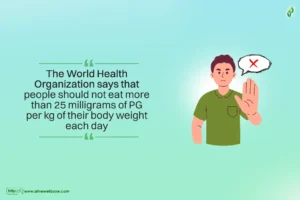
- Average Intake: In the United States, people usually eat more propylene glycol each day than is recommended. The average person eats about 34 mg of propylene glycol per kd of their body weight each day.
- Toxicity is Rare: It’s rare for people to get sick from eating too much propylene glycol. In one case, a man lost consciousness after drinking a lot of cinnamon whiskey that had propylene glycol in it. However, the alcohol he drank also made him sick.
- Safety in Moderation: Propylene glycol is usually safe for most people, but it can be harmful if you eat too much of it or if you’re allergic to it. To eat less propylene glycol, try to eat fewer processed foods.
Why is Propylene Glycol Banned in Europe?
The European Union takes a much stricter approach to chemical safety compared to the U.S. In cosmetics alone, the EU has banned over 1,000 harmful chemicals, while the U.S. has only restricted 11.
- Stronger Public Health Focus: The EU prioritizes protecting public health and the environment. In contrast, U.S. regulations tend to favor businesses and manufacturers, which can sometimes put health concerns on the back burner.
- Call for Change: Connecticut state senator Alex Bergstein has pointed out that the U.S. needs to shift its approach. He argues that the balance between industry interests and public safety has swung too far towards companies, potentially harming people and the environment.
Final Words
In summary, foods that contain propylene glycol are common in our daily lives, from snacks and drinks to sauces and baked goods. While it’s generally considered safe, some concerns exist, particularly for those with sensitivities or specific health conditions.
Now, we can all be more mindful by reading ingredient labels and choosing fresh, natural foods when possible. As awareness grows, we may see changes in how this additive is used in the future.
For now, it’s all about balance!
FAQs
Do eggs have propylene glycol?
Eggs don’t have propylene glycol in them. They’re made of water, protein, and fat. Propylene glycol is a chemical that is used in some foods, medicines, and cosmetics.
Does Sprite have propylene glycol?
Yes, Sprite has propylene glycol in it. It’s listed as E1520 or “natural flavors.” If you’re allergic to propylene glycol, you should try to drink less Sprite.
Does coffee have propylene glycol?
Some flavored coffee beans use propylene glycol as a chemical to make them taste better. It means that there might be a little bit of propylene glycol left in the coffee.

